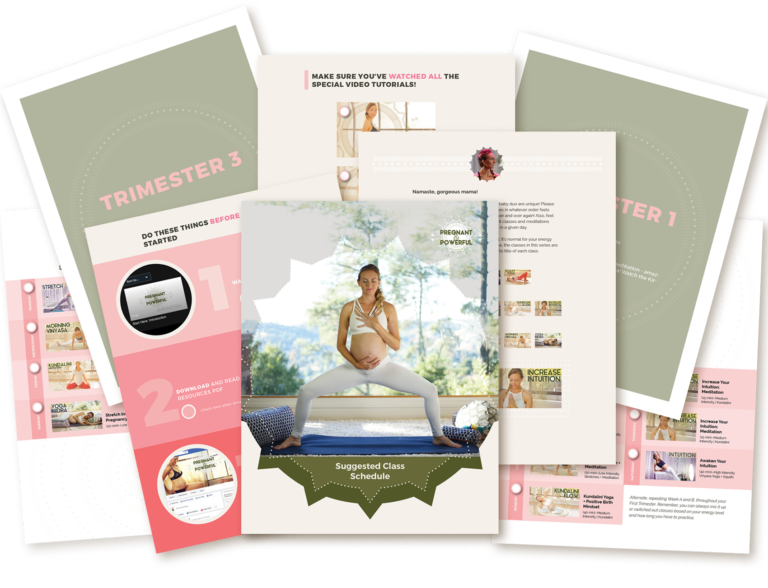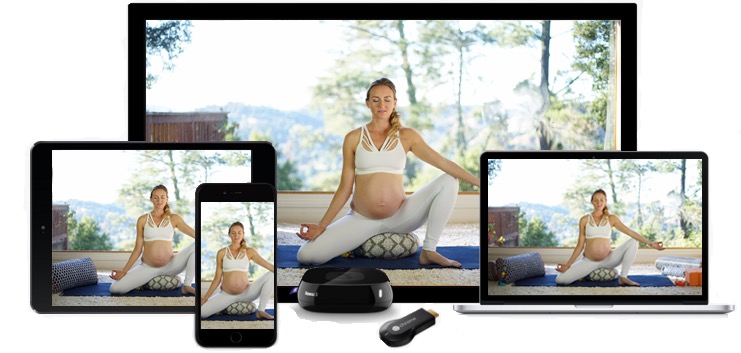Congratulations, you’re having a baby! Now is the time for questions that lead to research that leads to… TA-DA! More questions. I’ve been there! You’re probably here because you’re caught between two worlds; you’re considering a home birth, but you’re not sure if it’s right for you.
I gave 100% unassisted (not exactly the plan) home birth with my first born and a fully assisted hospital birth with my second, and I want to help you make an informed decision. I was very lucky in that both of my sons were considered low risk pregnancies, so both a planned home birth and a hospital birth were options I could consider. But given the choice, which one is better?
Home births are slightly riskier than planned hospital births, with a statistically significant increase in perinatal death (Scary I know! But don’t freak out yet… more on that below). But planned home births are a wonderful option for low risk women.
Another question I get all the time, which may have led you here: Which is more yogic? A home birth or hospital birth?
This depends on one thing only and one thing only: Where YOU feel SAFE. Do you feel more safe being surrounded by professionals? Or do you feel more safe dancing and breathing, unrestricted in your room? What does an empowering birth look like for YOU? This is so personal.
The yoga lies in knowing yourself (svadhyaya). Where will you, and by association your baby, feel most comfortable? Where are you going to scream like a banshee, squat, dance, and do what you need to do to get your baby out into the world? Both my unassisted home birth and hospital birth were yogic – but in very different ways.
The Pros and Cons of Home Birth vs. Hospital Birth
When I was six months pregnant with my first child, my husband and I couldn’t agree on a birth plan. I wanted a home birth. He was insistent we be at a hospital. We were bitterly entrenched in our sides for months and refused to cave to one another’s perspectives.
It wasn’t until I was meditating in my chilly studio-garage that I received a download from the Universe — an obvious “third creative solution” to our woes. I’d hire a midwife, labor at home for as long as possible, then transfer to the hospital if she felt it was needed. Win-win. Just like that, harmony was restored to my marriage. My husband and I both got what we wanted, even though we started on polar opposite ends of the spectrum.
What ended up happening however, wasn’t according to anyone’s plan. I went into labor quickly – like, REAL quickly. I’d been working with a certified professional midwife for many months leading up to my delivery date, but I ended up giving birth on my bathroom floor. My husband and my dog were there, but I felt totally alone. Everyone told me first babies never come early, so I didn’t believe I was actually going into labor when my first son decided to come 10 days before his due date. My registered midwife couldn’t get to my home fast enough to assist! Thankfully, she made it to my house 15 minutes later to help with the post-fetal monitoring, clean up, etc.
My second son arrived when COVID was at its peak. Since I was already a member of the home birth group, I figured I would do it again… but so many women were reluctant to go to a hospital and risk exposing themselves to the disease. Planned home births became the new normal, and it was impossible to find a midwife!
So, I took this as a sign from the Universe to try the hospital birth. I also thought it would be a cool way to support my prenatal students by giving them a direct comparison between the two methods. I researched tons of birth centers and hospitals. I asked friends for their recommendations before finally settling on a pro natural childbirth hospital, even though it was further from my home than a regular hospital.
Pros of a Home Birth
My home birth was absolutely beautiful, although I wish my midwife had made it for the actual birth event! I loved that I could switch between the hot bath, my bed, and moving, anytime I wanted. I loved the silence, being able to control my environment and go inward. Here are a few of the other big advantages to home birth:
- You get to choose exactly how you want to bring your baby into the world. From selecting the essential oils, to listening to your own music, to giving birth in the position that feels most natural to you – home deliveries are truly customizable. You’ll be able to work with your home birth team over the months of your pregnancy to craft the exact experience (and snack options!) you want.
- You can avoid unnecessary medical interventions. A planned home birth attended by certified nurse midwives and doulas are all about giving you and your baby the labor experience you choose. According to the American college of obstetricians and gynecologists, planned home births are associated with fewer maternal interventions, including labor induction or augmentation, regional analgesia, electronic fetal heart rate monitoring, episiotomy, operative vaginal delivery, and cesarean delivery. Hospitals are designed to deal with the worst case scenario, but that means they’re risk adverse and may interfere with your birth outcome too soon.
- Your certified midwife is part of the entire pregnancy. Simply put, planned home births compared to planned hospital births give you consistency in your birth team. Everyone is aware of your preferences and your comfort in a home birth. You all already know each other. In a hospital, you have no idea who will be delivering your baby. Kind of weird, isn’t it?! Even if you’ve been working with the same doctor from day 1, there’s no way to plan when you’ll be in labor around that doctor’s shift schedule and you most likely won’t know any of the nurses on staff.
- You’re “home” immediately postpartum. Once I had my first son, Alex, in my arms, the registered midwife took care of everything while I just sat there holding him in bed (blissed out)… umbilical cord intact… for hours. We had the opportunity for unlimited skin to skin contact right away, and there was no rushed feeling in the atmosphere. We were already home!
Pssst… do you already feel in your gut that you’re craving an empowering natural birth experience? If so, learn more with my free Pregnant and Powerful resource center!
Cons of a Home Birth
With a home birth, it’s very easy for things to not quite to go as planned. Many home births end up transitioning to the hospital. Despite all my planning, I ended up having to give birth in my bathroom without any professional help, because my certified midwife couldn’t get there in time! There are a few other disadvantages to home birth you should be aware of before choosing this delivery method:
- You may have to transfer to the hospital. If complications arise, from something as minor as your blood pressure getting too high, to the need for a cesarean delivery, your birth attendant will be the one making the informed decision on whether or not a planned home birth is still safe. Transitioning to a hospital birth at the last minute, in later stages of labor, can be pretty stressful.
- The neonatal mortality rate is higher in home births than in hospital births. This isn’t meant to scare anyone; in fact, the American College of Obstetricians and Gynecologists surmises that home births are associated with just over a twofold increased risk of perinatal death (1–2 in 1,000) when compared to hospital births. But however slim the risk may be, especially for healthy women with healthy pregnancies, the fact still remains that there is a higher risk of perinatal mortality and infant death with home birth.
- Cost related to poor health insurance coverage. Though the cost of a home birth is on the whole cheaper than incurring hospital charges, many health insurance options refuse to cover aspects necessary to a safe home birth as they sometimes fall under the catchall umbrella of alternative medicine. (Pro tip: Use any HSA or FSA savings to contribute to your doula or midwife fees.)
- It can get messy. While your birth attendants will typically come fully equipped with the tools and supplies needed to care for all aspects of the birthing process, there’s no telling where the mess might go! Suffice it to say that I had a toss a couple of my fluffy bath mats! When we moved, I was happy to never see the bathroom where everything “went down” ever again.
Another mini-con to home births, (“mini” depending on your personality), is that everyone – and I do mean everyone – will have an opinion on it. Your partner will most likely try to talk you out of it (like mine did!) and so will your parents. And your sister. And the butcher and the baker. And the cat. It can be tiring to constantly defend your decision to those expressing concern for your safety – especially when they love you.
My advice is to take everyone’s opinion, including doctors and midwives, with a grain of salt. At the end of the day, YOU are the one bringing a baby into the world. YOU get to choose. Only YOU know where YOU feel safe. End of discussion.
Pros of a Hospital Birth
Compared to a home birth, hospital births are efficient. My husband described what happened during my birth like me being in a Formula 1 pitstop. I had so many attendants paying attention to me in the crucial moments of delivery. I felt safe knowing that if anything went wrong, we were in a place designed to deal with any sort of health crisis. Here are a few other big advantages to the hospital route:
- Pain relief. I have a pretty high pain threshold (thank you, Kundalini Yoga), and I survived the sensations during my first birth unmedicated. It’s so empowering what your body can do (and the happy hormone surge you get immediately after birth, which you don’t fully get on pain meds). Yoga and meditation equipped me with the exact tools I needed in the deepest moments of labor. That being said, I know an unmedicated birth is not for everyone. There are certain medical interventions and enhancements that are NOT available to be used by home birth midwives outside of a hospital birth setting or a birth center… pain relief via epidural being one of them. If you think you’ll want drugs, choose a hospital birth.
- Lower risk of perinatal mortality. Certain complications can arise in planned home births that can only be dealt with in a hospital. When all is said and done, if you’re focused only on statistics, the greatest chance of a healthy outcome for mother and baby will happen in a hospital. However, if you don’t feel safe in a hospital setting, that stress could escalate your heart rate, and in turn affect the baby. That’s why I advise going where you feel safe.
- Access to advanced procedures. High risk birth outcomes can be prevented or corrected via fetal monitoring or cesarean delivery, when a vaginal birth is not safe. If you go the hospital birth route, pick the hospital with the best neonatal intensive care unit. After birth, the hospital also has everything you and your baby need immediately; I’m talking shots, vital records, the birth certificate… etc. With a home birth, you have to get all this stuff done weeks after the fact in a slew of seemingly endless appointments.
- Safer for you, the mom. If we were back in a time with absolutely no medical advancements, most women dying in childbirth would be dying because of a postpartum hemorrhage. These are an incredibly common complication, and usually happen within the 24 hours after delivery. Hospitals are especially equipped to handle these and other complications with the mother when they arise. I actually had a highly unusual case of hemorrhage happen to me a week after my hospital birth, but was glad I could drive to the hospital for help where all my stats were on file.
Cons of a Hospital Birth
My least favorite things about my experience in the hospital was how rushed everything felt, how many different people I interacted with, and how LONG I had to stay in the hospital. I just wanted to go home! Here are a few other disadvantages to hospital birth when compared to home birth.
- High Cost. Depending on your medical insurance coverage, giving birth in a hospital can be expensive, especially if something goes wrong. (See stats on this below!)
- Less Control. Hospital births rarely allow for personal desired modifications to the birthing process as they run a highly regulated health system. You may need to birth in a certain position for required fetal monitoring. You can’t move around as much, as you’ll have wires and perhaps an IV attached. Who gets to be in the room with you – and whether or not you get to eat – is outside your jurisdiction. You may be asked to birth on an empty stomach in case you may need surgery.
- Need for Self-Advocacy. One of my biggest frustrations when I gave birth to my second son was that none of the physicians or birth attendants in the hospital believed me when I said I was going into labor. This was the ONE time when all of my yogic training did me dirty… I was too calm! I basically had to force my way into being admitted. I started giving birth in the triage unit, and then everyone finally believed I was in labor (and not a second too late… I hadn’t made it onto the birthing bed for more than five seconds before my son came into the world!)
- It’s not a “safety guarantee.” While the American health care system in hospitals does a great job keeping current with medical treatments and advancements for mothers, things still can – and do – go wrong, often because of medical interventions that weren’t necessary in the first place. Home and hospital births are BOTH risky in different ways, because birth is inherently unpredictable.
- Vaginal exams. Hospitals won’t admit you unless you submit to a vaginal exam to confirm that your cervix is dilated. For me, this exam hurt worse than giving birth, so I hated being forced to do this (multiple times) as part of the admission process. Some women find them invasive, while some have no problem with it. Just be aware that the hospital, not you, determines when you get admitted. You may have to go home and come back multiple times.
How to Prepare for a Home Birth
The first and most important step in preparing for a planned home birth is selecting your birth team. This can include:
- A birth attendant
- A doula
- And/or a certified nurse midwife
Once you have your team in place, you’ll decide if what you’re really looking for is a planned home birth versus a birthing center (another option for non-hospital births I dive into more below).
What about unplanned home births? Even if you are planning to give birth in a hospital setting or at one of the many accredited birth centers across the globe, preparing for a home birth and even having a birth team on call could save your life. In short, having a secondary birth plan in multiple birth settings can only decrease the risk factors leading to neonatal mortality and general chaos.
If I were to go back and do everything over again, I would have prepared for my home birth by calling my midwife earlier!! I was in some serious denial that my baby was coming — I thought for SURE that my first would come late, but I learned the hard way that it really is possible for first time moms to welcome their babies early! All this to say, I refused to call my midwife when labor was happening, because I didn’t think it was real. By the time my husband got her on the phone, it was too late.
Another tip: During both pregnancies, I had some funky superstitions going on, LOL! This is so morbid, but I was convinced that something would go wrong with my home birth if I prepared by getting all of my supplies ahead of time. This carried over into my second pregnancy as well, where I was literally hunting Amazon between labor pains for a swaddle. 0/10 DO NOT recommend. Be as prepared as possible. You want to be focusing on your yogic breathing during labor… not ordering diapers.
And one final note on this– even if you are 100% planning a hospital birth, unplanned home births are STILL A THING. Being even slightly prepared for one in the event that you simply can’t get to a hospital in time is just good sense. Imagine where it would happen. Brush your partner up on the basics of what they would need to do to support you.
What are the Possible Risks of a Planned Home Birth?
Even if your doctors determine that you have a low risk pregnancy, there are certain risk factors that you need to pay attention to when planning a home birth. Maternal outcomes and newborn outcomes vary greatly in different ways depending on preexisting health concerns, such as a previous cesarean delivery. In order to make an informed decision about moving forward with the best possible birthing solution for you, talk to several doctors, midwives, and women in your life. I truly believe your birth tends to echo your mother’s… so ask you mom (if you can) all about her labor. Yours may follow a similar path.
Take note that for those in the home birth group, neonatal death and other adverse perinatal outcomes, compared with planned hospital births attended by a doctor or certified nurse midwife, are statistically significant. They do happen.
What Might Cause the Need for a Hospital Transfer?
In records that represent planned home births and birth center births, the North America Statistics Project states that around 12% of these mother-baby dyads transport to the hospital either during or immediately after labor. Even low risk pregnancies may find that the need to consider a hospital transfer if things are not optimal at the time of the final ultrasound (often, this means the baby is not in the right position for vaginal delivery).
Here are some resources that will help you prepare for a hospital transfer in the event your certified nurse midwife deems it necessary:
- Home Birth Summit: Best Practice Guidelines: Transfer from Planned Home Birth to Hospital
- Foundation for Health Care Quality: Smooth Transitions
- Utah Best Practice Guidelines: Transfer to Hospital from Planned Out-of-Hospital Birth
BONUS TIP: Pack your hospital bag. Like, WEEKS before you think you need to. (This applies whether you plan to go to the hospital or not… you never know, and having a to-go bag ready can be a game changer!)
Are There Situations When a Planned Home Birth Isn’t Recommended?
Absolutely. Every BODY is different! Of course, there are certain factors that can turn otherwise low risk women into women with higher risk births. For example, certified professional midwives and doctors alike agree that planned home births are not recommended for women who have had a prior cesarean delivery. The American College of Obstetricians and Gynecologists is very clear about the absolute contraindications for planned home birth:
- Fetal malpresentation (your ultrasound shows baby is in any position but head-down in your final appointment before birth)
- Multiple gestation (more than one baby in the belly)
- Prior cesarean delivery
One of the most important aspects for choosing a delivery method is what position your baby is in. If your baby is not head-down, a hospital birth becomes necessary.
Another thing to consider is that complications arise more frequently when pregnant women suffer from gestational diabetes, high blood pressure, or heart disease. Sometimes vital statistics don’t appear until midway through a pregnancy, such as significant disease arising. So CHECK IN with yourself. You might at first feel more safe having a home birth, but things happen, and that might change part way through your pregnancy. Reserve the right to change your mind up until the last minute.
Why Do women Choose Planned Home Births?
So many reasons! Women with a low risk of negative maternal outcomes might choose a higher risk vaginal birth at home than a lower risk planned hospital birth attended by a licensed physician for a variety of reasons. Religious beliefs, a desire to have more control over the process, the priority of delivering in a comfortable environment (birth tubs, anyone?!), but the most common reason women opt for home births is to avoid the hospital atmosphere and interventions.
Another option for non-hospital births women often fail to consider is to take advantage of accredited birthing centers. Many home birth midwives recommend this hybrid approach as it can offer the best of both worlds – home-like comfort without invasive procedures – but they can also turn into the worst of both worlds, since you don’t really have the creature comforts of home and STILL may need to transition to a real hospital. But you should especially consider looking at birthing centers if the home you were thinking about giving birth in is too far away from a hospital to get you there in time if the need for a hospital transfer arises.
How Much Does a Home Birth Cost?
Another reason women may opt for a home birth is that it can be considerably less expensive than a planned hospital birth. Be aware however, that not all insurance companies cover the cost of many aspects of non-hospital births. Gotta love those sneaky clauses about “alternative medicine!” If you have access to an HSA or FSA through your employer, using those funds for your home birth is an excellent idea.
According to the National Library of Medicine, the average cost of home births in the United States is $4,560. According to the U.S. Department of Health and Human Services, the national median charge for childbirth hospital stays is $16,884. Oof. This amount is, however, estimated without factoring in any insurance coverage, and spans a gamet of birth types from a vaginal birth with no complications ($10,958 median cost) to a cesarean delivery with complications ($21,704 median cost). In summary:
- Home birth = $4,560
- Overall cost of childbirth hospital stays = $16,884
- Cesarean delivery with complications in a hospital = $21,704
- Vaginal birth with no complications in a hospital = $10,958
These costs are all pre-insurance. So how much would you actually end up paying? That depends on your insurance coverage. Do your research and ask questions like:
- What is my deductible?
- What is my copay?
- What is my coinsurance?
- What is my out-of-pocket maximum?
Don’t stress; it’s very unlikely that you will actually end up paying the median of 17K for a hospital birth, as maternity coverage is considered an essential health benefit. Under the Affordable Care Act, pregnancy, labor, delivery, and newborn baby care must be covered by all health insurance plans offered to individuals, families, and small groups. In fact, you may even be paying less than the home birth median of 5K.
And there you have it! I hope this was an informative yogic perspective on the difference between home births and hospital births. If you want a home birth like I did, or want to feel empowered in labor no matter where you give birth, yoga and meditation are the BEST things you can do.
My Pregnant and Powerful Course is the next step in discovering how to prepare your mind, body, and spirit in all four (yes, four!) trimesters. It includes podcasts from me as well as classes to do every trimester that fuse Vinyasa and Kundalini yoga (I credit Kundalini with giving me the mental strength I needed to get through labor). I even include a postpartum 40 day kriya! Get it here or get my FREE prenatal resource center for mammas wanting an empowering birth. I’m wishing you the most magical pregnancy! Remember: deciding where you feel safe is the most important decision you’ll make about your birth.
Next Steps
- Visit my Free Pregnant Yogini Resource Center for guided meditations, practice, and resources for a healthy and peaceful pregnancy!
- Check out my Prenatal Yoga Playlist on my YouTube channel and find some yoga classes that you can try out for yourself!
- Join Uplifted for exclusive content that you can access right from the app. Take a deep dive into your practice with me this year!
Access my Ultimate Yogini Resource Center for mamas manifesting an empowering, natural childbirth. IT'S FREE!

YOU MIGHT ALSO LIKE
- The Best Kundalini Yoga for Pregnancy: How to Practice Safely
- Yoga For Third Trimester: My Favorite Poses
- Home Birth vs Hospital Birth: Which is More Yogic?
- 9 Yoga Modifications for Pregnancy and How to Teach Them
- How To Relieve Pelvic Girdle Pain During Pregnancy
- What To Consider When Taking a YTT While Pregnant
- My Guided Pregnancy Meditation To De-Stress & Connect With Your Baby [VIDEO]
- 6 Natural Ways to Prepare Your Body For an Easy Labor & Delivery
- 6 Crazy Easy Pregnancy Meditation Tips For A Powerful Practice
- Six Essential Prenatal Yoga Poses for a Powerful Birth












